4A0-101 Online Practice Questions and Answers
Questions 4
Select the answer below that correctly lists the 5 different OSPF packet types.
A. Hello, Link State Update, Link State Packet, Link State Acknowledgement, Database Descriptor
B. Link State Update, Link State Refresh, Link State Acknowledgement, Database Descriptor, Notification
C. Hello, Link State Refresh, Link State Update, Link State Acknowledgement, Link State Authentication
D. Hello, Link State Update, Link State Request, Link State Acknowledgement, Database Descriptor
Questions 5
When configuring a filter, where should the most explicit entries be placed?
A. At the bottom
B. In the middle
C. At the top
D. It does not matter where they are placed.
Questions 6
Click the exhibit button A. The route policy should be applied as in import policy
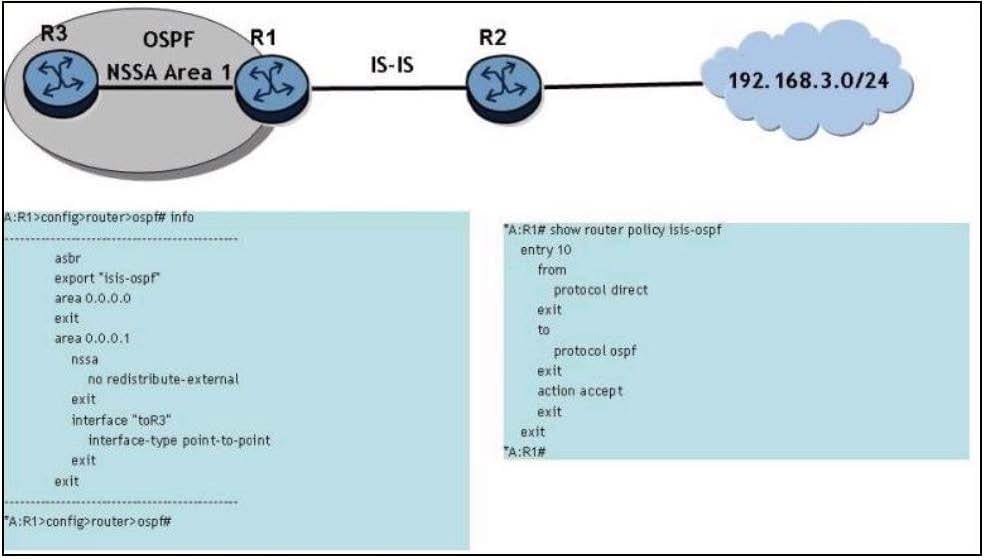
The 192 168 3.0/24 network is learned on router R1 via IS-IS Given the OSPF configuration shown, and assuming that the OSPF adjacency between routers R1 and R3 is up, why is the 192 168.3.0/24 route not in router R3's route table? (Choose two)
B. The no-redistribute-external command is used on router R1
C. The route policy is incorrect. It should say "from protocol ISIS" rather than "from protocol direct".
D. It is not possible to be an ASBR and an NSSA. The ASBR configuration should be removed.
E. The interface between routers R1 and R3 needs to be in OSPF area 0 rather than OSPF area 1 because a backbone area must always exist.
Questions 7
Click on the exhibit.
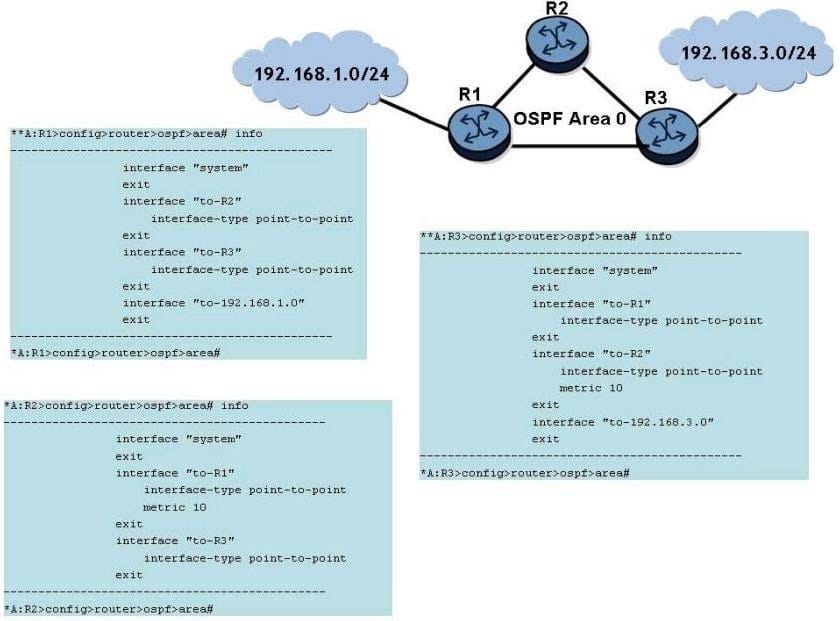
All ports in the network are operationally up and have a speed of 1Gbps.
Which of the following is TRUE?
A. Data traffic from network 192.168.1.0/24 to 192.168.3.0/24 will be forwarded through router R2.
B. Data traffic from network 192.168.3.0/24 to 192.168.1.0/24 will be forwarded through router R2.
C. The system interface of routers R1 and R3 must be included into OSPF for traffic to flow between the 192.168.1.0/24 and 192.168.3.0/24 networks.
D. The OSPF adjacency between router R1 and router R3 is operationally down.
Questions 8
Click on the exhibit.

Router R4 is being added to the network and it is connected to a non-OSPF domain. Which area type should be used for Area 1 to allow the external routes to be advertised into Area 0?
A. Backbone
B. NSSA
C. Stub
D. Totally stubby
Questions 9
Click on the exhibit.
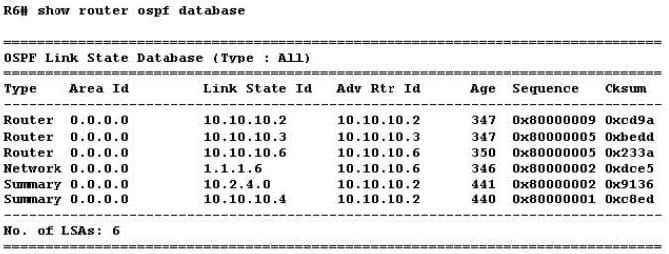
Given the output shown, which router is the ASBR in this network?
A. 10.10.10.2
B. 10.10.10.3
C. 10.10.10.4
D. 10.10.10.6
E. There is no ASBR configured in the network.
Questions 10
Which of the following is a difference between IS-IS and OSPF?
A. IS-IS supports VLSM and CIDR.
B. IS-IS uses OSI addressing.
C. IS-IS supports manual summarization
D. IS-IS uses periodic Hello messages.
Questions 11
Click on the exhibit.
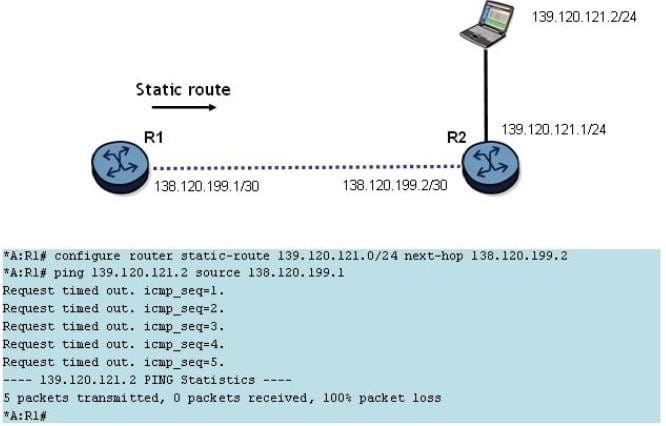
A static route has been configured on router R1 to reach the PC at 139.120.121.2. What else is required to make the ping succeed?
A. A default route on router R2 to router R1.
B. A default route on the PC to router R2.
C. A static route on the PC to router R2 and a static route on router R2 to the PC.
D. A default route on router R1 to router R2.
Questions 12
Click on the exhibit.
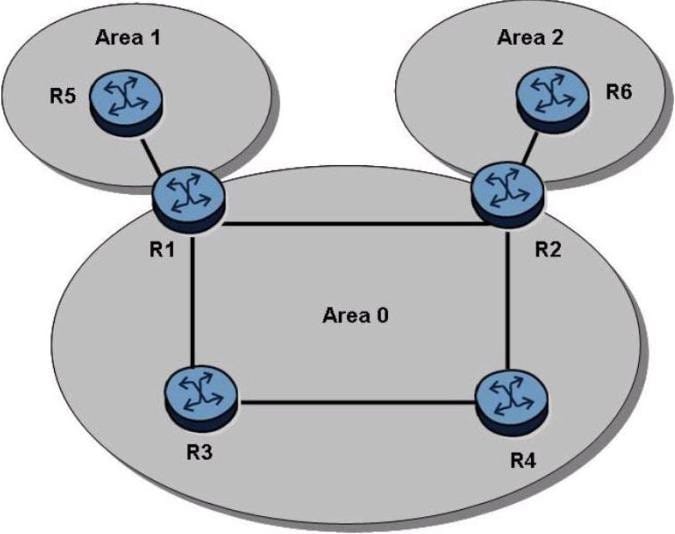
Assume that OSPFv3 is properly configured on all routers and that router R4 advertises its system prefix into Area 0.
Which of the following best describes how router R5 learns router R4's IPv6 system prefix?
A. With a Router LSA originated by router R1.
B. With a Router LSA originated by router R5.
C. With a Router LSA originated by router R4.
D. With an Inter-Area Prefix LSA originated by router R1.
E. With an Inter-Area Prefix LSA originated by router R5.
F. With an Inter-Area Prefix LSA originated by router R4.
Questions 13
Which of the following best describes an OSPF Type 3 LSA?
A. A Type 3 LSA is generated by an ASBR only when route summarization is configured.
B. A Type 3 LSA is generated by an ABR only when route summarization is configured.
C. A Type 3 LSA is generated by an ASBR to describe routes to routers outside the area.
D. A Type 3 LSA is generated by an ABR to describe routes to routers outside the area.
